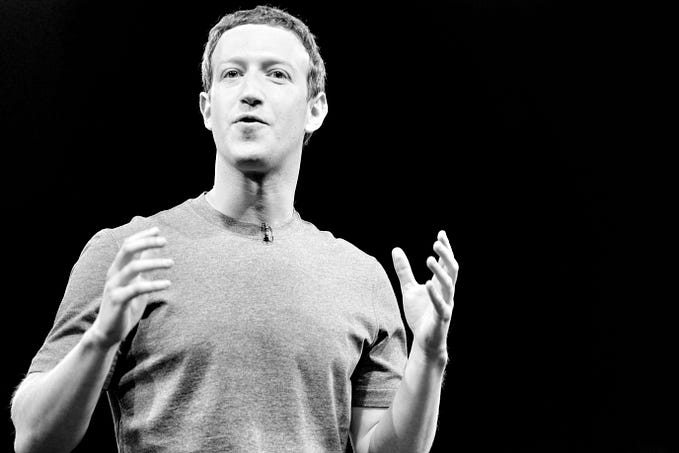Youthquake: A COP26 for High School Students with Social Equity, Environmental Justice and Economic Opportunity at the Core


It was a tale of two generations — and genders.
The young climate activists, led largely by female students, demanding urgent change versus the world leaders, mainly men of a certain age, who understand the need but aren’t moving with the required urgency.
That was one of the stories of the recent COP26 climate summit in Glasgow.
The young people protesting certainly understand their role as activists. But do they recognize the other roles they could play in the fight to combat climate change?
That was the question we asked ourselves at Covestro. Our answer was to host THINC30 Youthquake, a three-session virtual summit held simultaneously to COP26. Its central purpose was to show today’s high school students — who will soon carry the mantle of climate changemakers — the myriad ways to get involved.
Climate Action is Goal #13 of the 17 UN Sustainable Development Goals. So, we began by showing them exactly how climate is related to sustainability overall and how it is playing out every day in real life. Marilyn Waite, our keynote speaker and author of Sustainability at Work: Careers that Make a Difference, did a fine job of connecting the social, economic and environmental justice dots that underpin sustainability and showing how each directly impacts the other. How if you improve environmental conditions in a community, you also improve the health and well-being of the residents, as well as their job prospects. Then it made a lot of sense why ending hunger and poverty are connected to gender equality, quality education and climate action — some of the other UN SDGs.
Marilyn also added a fourth sustainability dimension, future thinking and planning, which is so important to helping us avoid developing solutions today that may end up creating other problems down the line.
By painting the big picture, Marilyn put all the other speakers into context. For example, it was easy to see how social innovator, Leah Lizarondo, is helping achieve a number of the Global Goals. Her organizations, 412 Food Rescue and Food Rescue Hero, not only support Goal #2 Zero Hunger, but by rescuing food and getting it to people who need it, they’re also addressing Responsible Production and Consumption (#12) and Climate Action, since that food is no longer destined to turn into methane — one of the most potent greenhouse gases — at the landfill.
The same was true of MOVE PGH, a first-of-its kind municipal mobility app in Pittsburgh that is a one-stop-shop for people who need to get from point A to B. While affording people the means to get their jobs, Move PGH also introduces them to modes of transportation other than automobiles like electric scooters and bicycles, thus potentially lowering GHG emissions in the region. Improving economic conditions for Houston residents by bringing them into the innovation economy is the goal of The Ion. With unique services and tools for start-ups, incubators and accelerators, The Ion itself is a building that anchors an entire such district that is 100 percent walkable.
Jobs, careers, industries, and systems of the now and the future were the focus of Youthquake’s second session. We started by introducing attendees to Circular Economics. It’s been said that a systems failure requires a systems change. That is what Circular Economy represents — a complete transformation from the current linear economic model.
Covestro’s own Haakan Jonsson explained how traditionally countries, communities, companies, industries, organizations and systems have taken natural resources to make products that then end up as waste to be discarded. Take, make, waste. What we’ve discovered is it’s an unsustainable system for the planet. It depletes resources, creates pollution and unleashes greenhouse gases into the atmosphere.
Circular Economy, on the other hand, is based on the “Rs of reuse, recycle, repair, refurbish, remanufacture,” which create a “closed loop” system that minimizes waste, pollution and carbon emissions by keeping them all in the production cycle to be used as raw materials.
CE is a powerful tool in combating climate change. One pioneer of the field is Construction Junction, which has been collecting and reusing construction debris for more than 20 years now in the Pittsburgh region. Mike Gable, founding director, explained that in the U.S. construction waste is a 600-million-ton issue, that since 1970 our use of resources has tripled and that number is expected to double in the next 20 years. So instead of increasing production and using up precious resources, the goal is to reuse materials that already exist. That approach is at the heart of the emerging industry known as “deconstruction.” Instead of demolishing buildings, deconstruction takes them apart, piece by piece. The pieces are then used for other building projects. Thus, a whole new industry that is circular in nature is born.
So, too, the industries of indoor agriculture and carbon capture.
Indoor ag, also known as vertical farming or controlled environment agriculture, centers on building indoor farms in places where people live like cities, explained Jim Pantaleo from the University of California, Davis’ Artificial Intelligence Institute for Next Generation Food Systems. That way we can cut down on the 1,500-plus miles — and attendant GHGs — it typically takes a head of lettuce to get from field to fork, as well as water usage since recirculation is used in indoor ag. One more benefit — no pesticide-herbicide-fungicide pollution is created by farms through water runoff.
Pulling CO2 out of the air and ground and finding new uses for it is the circular aim of the industry known as carbon capture. Carbon180 founder Noah Deich tantalized attendees when he talked about how, with clever chemical engineering innovations, waste CO2 can actually become the raw material used to produce new materials and products.
Both Jim and Noah agreed that when it comes to job opportunities in their two industries, everyone’s invited to the table. Whether it’s graphic design, computer science, finance, law, communications, marketing, these industries need people with all kinds of expertise. The only prerequisite is that they must be passionate about the work itself.
In our third and final session, attendees learned that the entire education spectrum has a role to play in creating current and future generations of climate changemakers.
At the K-12 level, this involves a shift to a transformative education approach where students are given the opportunity to gain knowledge and skills and then apply them to make a positive impact on climate, whether in school, at home or in the community.
According to Katie Modic, executive director of the pre-college education program Communitopia, “We provide transformative climate change educational opportunities that help students design solutions to climate change that really make their community a healthier and a better place. Our programs are action-oriented, they are solution-focused, they are place-based, and they are relevant to the students’ lives.”
Our higher education experts, Lou Leonard from Chatham University and Sharon Collinge from University of Colorado, Boulder, had several key messages about preparing students for climate careers. First, collaboration is critical. Both on campus, between different academic disciplines, and off campus, with industry, community organizations, governments, nonprofits and others. Second, sustainability education should be transdisciplinary and set students up for a range of career opportunities post-graduation. Third, you don’t have to be an environmental scientist or a climate researcher to have an impact.
“None of us has the knowledge or the ability to address such a complex problem like climate change on our own,” said Collinge. “We have to listen and we have to learn from people with a wide range of experiences and knowledge types, and to truly understand the problems and the possible solutions to climate change.”
The Environmental Defense Fund’s Climate Corp program for graduate students echoed that message. Its director Scott Wood said that very few of their Climate Fellows are environmental scientists. Many, in fact, are MBAs with a wide expertise in environmental management, corporate sustainability and public policy.
The bottom line is simple, according to Wood. “We need all of you who are listening, that next generation of climate leaders to use your voice and your passion to push the rest of us in the right direction. Really to hold people in power accountable.”
The truth is that mitigating climate change and ensuring our planet’s long-term viability is an everyday reality for the foreseeable future. We are inspired by today’s young people who continue to embrace the issues and use their voice. With THINC30 Youthquake, we hope they also discover how they can channel their passion and purpose to build their own future, as well as a world marked by social equity, environmental justice and economic opportunity for all.









